Australia So Much to See
Girraween National Park in the Granite Belt
The dust storm: We awoke to see a dark cloud approaching from the West. Having experienced dust storms in the Western
Australian Wheatbelt, this ominous colour indicated a dust storm closing in on us. If we hadnít had the booking and only
for a limited period due to the long weekend, we would not have driven on the road that day as sand from three states of Australia, driven
by a strong and gusty wind. Barely a shadow was cast in the eerie light and the GPS would not work as a path to the satellites
needed was blocked.
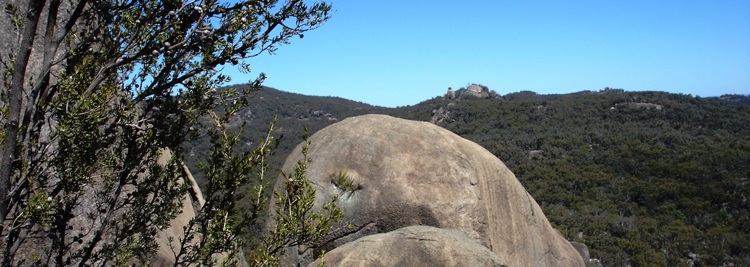
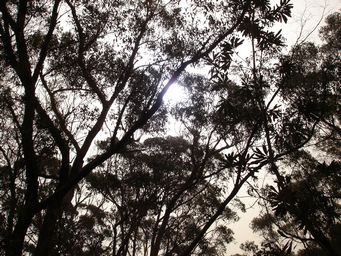
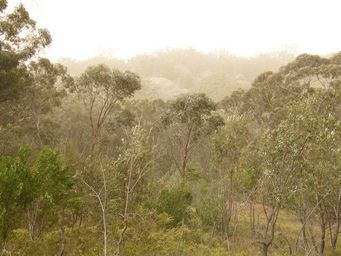
A silvery colour in the sky was the only indication of the sun high in the sky. It was not a day to attempt long walks, let alone climbs on the granite hills. We took short low level walks only in the unpleasant conditions.
The sky was reddened with dust across three state over two days with a huge cloud of dust. At this stage, the reddest dust had not reached Queensland
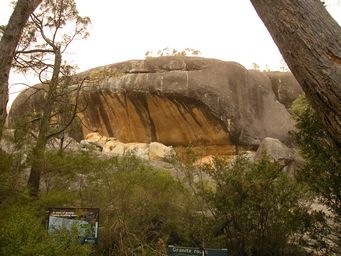
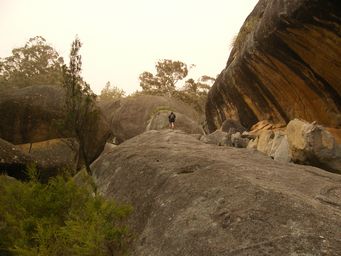
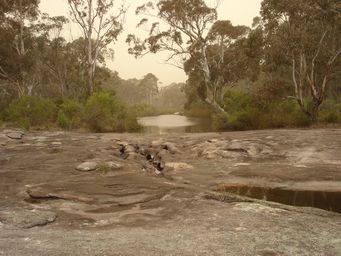
We chose a low level set of woodland walks during the unpleasant wind and dust.
The Underground Creek has been formed by a rock fall from the top of a wave rock face, covering this part of Bald Rock Creek. As my husband was unwell at the time, I walked on alone beyond and over the rocks to where the creek went under the rocks.
There was lots of scope for exploring,
but with the sun obscured by the dust I became disorientated and was not keen on continuing on my own and becoming totally lost.
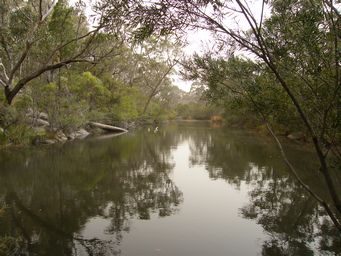
Dr Spencer Roberts from Stanthorpe was dedicated to saving the habitats of the Lyrebirds and the Wombats. This waterhole was a favourite place.
Following his submission to the Queensland Government for the area to become a National Park, Bald Rock Creek National Park was declared in 1930 and Castle Rock National Park in 1932.
The park has since been expanded
with additional land included, and adjoins the Bald Rock National Park to the east across the New South Wales border.
The name Girraween means Many Flowers. We saw many different wildflowers blooming on our walks, and a few of them are displayed
below.
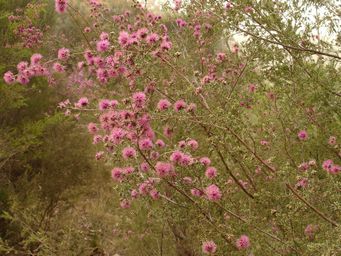
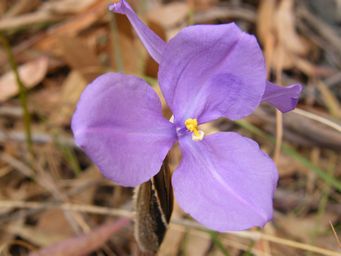
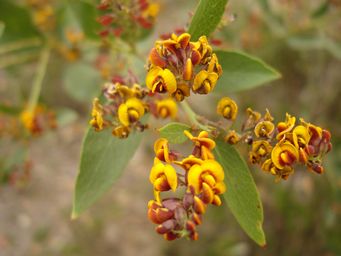
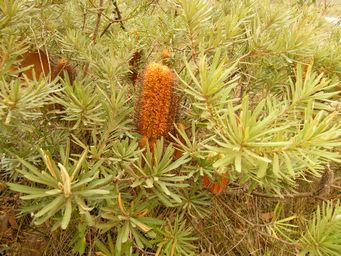
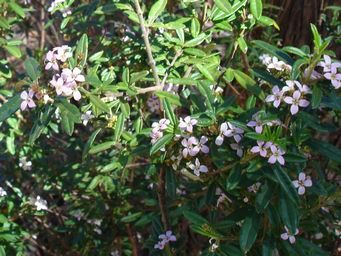
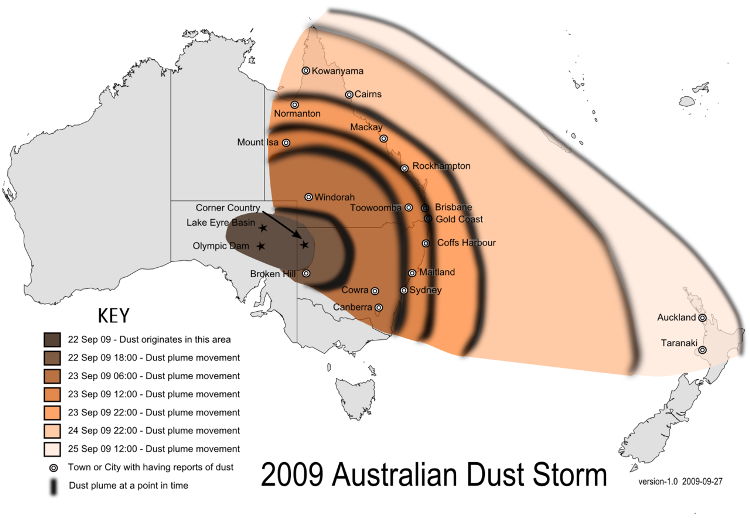
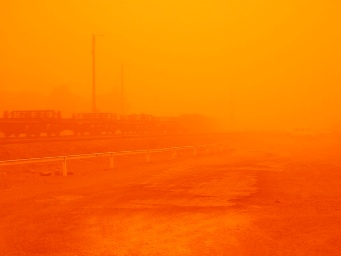
The 2009 Australian dust storm swept across the Australian states of New South Wales and Queensland from 22nd to 24th September. On 23rd September, the dust plume measured more than 500 kilometres in width and 1,000 kilometres in length. By 24th September, the distance from the northern edge at Cape York to the southern edge of the plume to be 3,450 km. While the cloud was visible from space, on the ground the intense red-orange colour and drop in temperature drew comparisons with nuclear winter, Armageddon, and the planet Mars. The dust storm was described by the Bureau of Meteorology as a "pretty incredible event" that was the worst in the state of New South Wales in nearly 70 years.
The CSIRO estimated that the storm carried some 16 million tonnes of dust
from the deserts of Central Australia, and during the peak of the storm, the Australian continent was estimated to be losing 75,000
tonnes of dust per hour off the NSW coast north of Sydney.